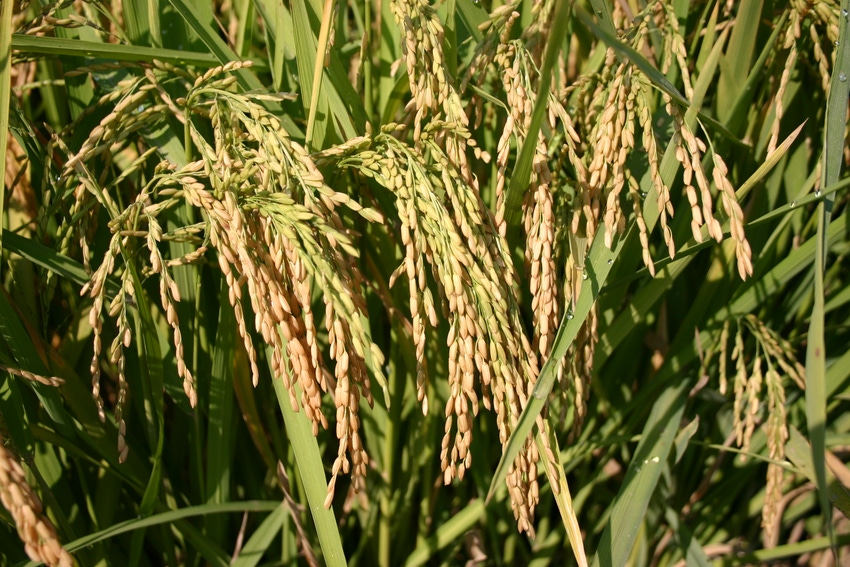
Lifting obstacles to rice sales could improve Cuban diets
“Until about 2003 or 2004 that ration amount was 5 pounds per person,” says Terry Harris, senior vice president for marketing and risk management at Riceland Foods in Stuttgart, Ark. “It was actually raised to 7 pounds in 2004, but rice is still not always available for the people of Cuba.”
August 14, 2015

U.S. farmers and their commodity organizations see improving relations with Cuba as a golden opportunity to increase sales of their crops and ag products to a country that literally is located at their back door.
But those groups may be, in fact, “missing the boat” because of a lack of understanding about actual conditions in Cuba. Increased trade would do more than provide another market for U.S. ag; it could be a means of insuring the Cuban people get enough to eat.
According to government rules, each person of a certain age in Cuba is supposed to receive 7 pounds of rice per month. All Cubans have a ration book, which allows them to buy a certain amount of rice, beans, oil, sugar, salt and some other products they need on a daily basis at subsidized prices.
“Until about 2003 or 2004 that ration amount was 5 pounds per person,” says Terry Harris, senior vice president for marketing and risk management at Riceland Foods in Stuttgart, Ark. “It was actually raised to 7 pounds in 2004, but rice is still not always available for the people of Cuba.”
Harris, a speaker for the University of Arkansas’ Division of Ariculture’s Aug. 13 Food and Agribusiness Webinar titled “Rice Marketing with a Cuban Flavor,” has been traveling to Cuba for Riceland Foods since 1999.
He negotiated the first shipment of U.S. rice that went to Cuba after Congress relaxed trade restrictions under the embargo put in place by President Kennedy in 1962. The sale was concluded the day before Thanksgiving in 2001, and the first vessel arrived in Havana in February 2002.
Large pre-revolution market
Prior to the Cuban Revolution in 1959, U.S. producers sold $600 million of rice, pork, lard and wheat flour annually to Cuba. Some agricultural economists believe U.S. farm exports to Cuba could exceed $1 billion annually if U.S. government regulations that make it difficult for Cuba to purchase U.S. products were lifted.
Ideas Cuba could become a large market for U.S. rice are true, Harris says. The island’s population of 11 million consumes about 900,000 metric tons of rice or about 180 pounds of rice per person annually.
“And I would tell you if there was more rice available in the market, that consumption would actually increase because quite often there are not adequate supplies of rice in the market,” he noted.
The Cuban government reports its farmers grow 500,000 to 600,000 metric tons of rice annually. Harris puts the actual figure closer to 450,000 to 500,000. “They do have low yields. They suffer from situations where they don’t have the proper inputs in a timely fashion so their yields are significantly lower than field yields in the U.S.”
Since 2011, rice imports have been running about 440,000 metric tons per year on a milled basis (or about 650,000 metric tons of paddy rice.) In Riceland’s case, the first shipment of U.S. rice was in bulk. It was bagged using portable bagging equipment on the docks in Havana and shipped to distribution centers or a nearby warehouse.
Most of the rice currently entering Cuba comes from Vietnam. Typically, the Vietnamese sell low quality rice at low prices. They extend credit to Cuba’s government for 18 months to two years, which is important for cash-strapped Cuba. Any rice shipped from the U.S. has to be paid for in cash before it leaves the U.S. ports under U.S. law.
60-year embargo mainly hurts U.S. farmers
The U.S. embargo certainly increases costs and inhibits trade, according to Harris. “There's absolutely no doubt of that because of vessel restrictions and because of banking restrictions which, are now beginning very, very slowly on a small scale to change. But those two issues are very important in trying to create trade with Cuba.”
The lack of hard currency could be addressed by relaxing trade barriers. Cuba has products they would like to sell to the U. S., which are quite. Allowing Americans to travel to Cuba freely rather than forcing them to jump through numerous hoops to get permission would create revenues.
“Tourism, sugar, nickel and repatriation of funds are the four largest areas of foreign exchange for Cuba,” says Harris. “But most of the tourism occurring now are from groups that are not the higher value tourism that they would like to see, and they expect to get from the U.S.”
Harris said he knows many people are concerned these revenues would not trickle down to the average Cuban. “I disagree with that. Certainly not all of it is going to be shared, but I would assure you they realize the need and they do realize the need to try to improve the lives and the products available for the Cuban population.”
To watch a video of this presentation, go to Rice Marketing with a Cuban Flavor and Other Potential Trade Opportunities. To learn more about the webinar series, see http://www.uaex.edu/farm-ranch/economics-marketing/food-agribusiness-webinars/.
About the Author(s)
You May Also Like





